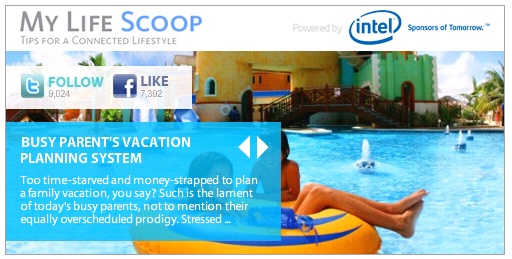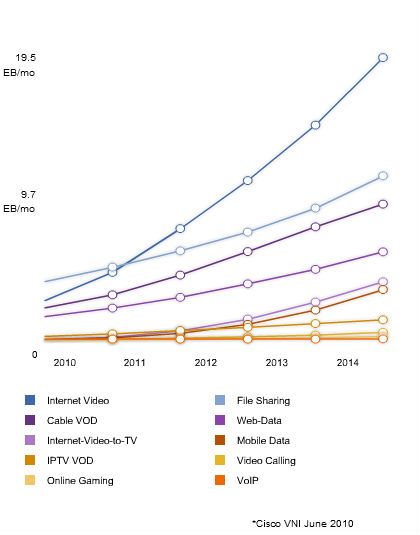Die aktuelle Studie “Social Network Hierarchies and their Impact on Business” von Bridge Ratings bestätigt eine Theorie, die ich schon seit einigen Wochen in Vorträgen vertrete. Die Nutzung von sozialen Netzwerken hängt sehr stark von einer alterabhängigen, stufenleiter-orientierten Hierachie (oder Evolution?) der User ab, die sich mit dem Alter und Wissen verändert.
Kurz gesagt, macht die Studie unter 2322 Personen im Alter zwischen 6 und 54 Jahren eins klar: Für jedes Alter gibt es einen bestimmten Typus von Social Media und Social Networks sowie eine entsprechende Hierarchieordnung von Social Netzwerk Nutzertypen.
Vor allem bei der Nutzung durch die Generation X und Generation Y zeichnen sich hierbei besondere Unterschiede ab. Aber auch in den Generationen bis 54 Jahre lässt sich dieser Trend beobachten. Das Marketing Verhalten bei der Adressierung der Zielgruppen ist entsprechend anzupassen, folgern die Studienmacher.
 Mädchen im Alter zwischen 6-17 Jahren beginnen vorwiegend mit der Nutzung von Seiten wie Club Penguin, Poptropica and Stardoll. Über die Jahre hinweg geht die Nutzung dann in Twitter oder Spieleseiten wie Habbo über, was einem Aufstieg in der Nutzungshierarchie gleichzusetzen ist.
Mädchen im Alter zwischen 6-17 Jahren beginnen vorwiegend mit der Nutzung von Seiten wie Club Penguin, Poptropica and Stardoll. Über die Jahre hinweg geht die Nutzung dann in Twitter oder Spieleseiten wie Habbo über, was einem Aufstieg in der Nutzungshierarchie gleichzusetzen ist.
Obwohl man meinen könnte, daß auch sie Seiten wie Facebook und MySpace nutzen, so zeigt sich, daß Freunde zwar im Lebensmittelpunkt stehen, aber mittels anderer Netzwerktypen kommuniziert wird. Die Nutzung dieser führenden Social Networks unter 35-54 Jährigen ging um 25% im Vergleich zum Vorjahr nach oben.
Ein Test bei einer Radiostation, die mit ihren Marketingaktivitäten die Hierachie Muster beachtete und anwand, belegt die Hierachie-Theorie. Die Station promotete regelmäßig die Seiten mit Gewinnspielen und Kunden-promotions. Das Ergebnis: In allen Bereichen stieg die Response und/oder Teilnahme um nicht weniger als 25%. Dies belegt -nebenbei bemerkt- auch die Wichtigkeit von Outbound für Inbound Marketing.
 Bei den 18-24 jährigen jungen Damen steht das Hochladen von Produkt-orientiertem Inhalten (45%) hoch im Kurs. Dies lässt sich auch leicht an der Begeisterung für das Bloggen nachvollziehen, bei dem das Thema “Trends setzen und finden” eine nicht unerhebliche Stellung einnimmt.
Bei den 18-24 jährigen jungen Damen steht das Hochladen von Produkt-orientiertem Inhalten (45%) hoch im Kurs. Dies lässt sich auch leicht an der Begeisterung für das Bloggen nachvollziehen, bei dem das Thema “Trends setzen und finden” eine nicht unerhebliche Stellung einnimmt.
Daß junge Erwachsene selbstbewußt ihre eigene Meinung vertreten und ihre Fähigkeit diesbezüglich nutzen, zeigt sich als eine der Haupt-Charakteristiken durch die ganze Studie. Vor allem wird dies ersichtlich aus ihrem Verhalten hinsichtlich ihres Markenbewußtseins. Mehr als ein Drittel (35%) haben sich in einem Internet Forum oder einem sozialen Netzwerk über ein Produkt oder eine Marke in den letzten Monaten geäußert. Fast 40% haben online ein Produktmeinung geschrieben.
 Junge Männern zwischen 18 und 28 Jahren zeigen sich als Multiplikatoren von Produkt-Informationen – 76% haben derartige Informationen weitergeleitet. Sie gelten als die Markenexperten, denn 54% haben auf Onlinewerbung geklickt und sogar 38% haben sich Werbung vor einem Videoinhalt angesehen.
Junge Männern zwischen 18 und 28 Jahren zeigen sich als Multiplikatoren von Produkt-Informationen – 76% haben derartige Informationen weitergeleitet. Sie gelten als die Markenexperten, denn 54% haben auf Onlinewerbung geklickt und sogar 38% haben sich Werbung vor einem Videoinhalt angesehen.
45% laden regelmäßig Werbung oder Produktmeinungen (und Clips) auf Social Networks oder Videoseiten hoch. Ein Drittel hat in Foren über Marken gesprochen und ein gleicher Prozentsatz kommuniziert über markenbezogenen Inhalte auf Instant Messenger oder sozialen Netzwerken.
Spot On!
Die Studie zieht folgende sechs Schlüße aus den Ergebnissen, die spezielle Aufmerksamkeit verdienen (sollten) bei sozialen Marketingaktivitäten:
1. Soziale Seiten targeten, wenn spezifische Konsumenten erreicht werden sollen. Nicht alle Konsumer nutzen soziale Netzwerke auf die gleiche Weise.
2. Laser-fokussierte Produktbotschaften, verschlüsselt an den Lebensstil des Targets zu richten, sind kritisch.
3. Jede Konsumentengruppe und Seite wird begrenzte Wiederholung von Botschaften tolerieren.
4. Begrüßen sie die Hierarchie durch die jede Gruppe reist während ihre sozialen Netzwerk-Fähigkeiten und Erfahrung wachsen und sich verbessern.
5. Staffeln sie Hierarchie Botschaften um den effektivsten Responseraten zu erzielen.
6. Social Networking Kampagnen in Flights abfeiern.
Die Studie liefert einige gute Erkenntnisse. Was denkt Ihr darüber? Decken sich Eure Erfahrungen mit den Ergebnissen?
 It is always interesting to see how companies are trying to sell their products and services with advertisements referring to two essential factors: time and money. Most of their marketeers can imagine the impact and effect of them on customers. The proof was often missing (also for me). After some years of searching, I found a study that states a relevant difference in which way companies are persuading customers to buy their products and services using these arguments to explain them the benefitial features.
It is always interesting to see how companies are trying to sell their products and services with advertisements referring to two essential factors: time and money. Most of their marketeers can imagine the impact and effect of them on customers. The proof was often missing (also for me). After some years of searching, I found a study that states a relevant difference in which way companies are persuading customers to buy their products and services using these arguments to explain them the benefitial features.










